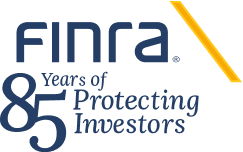Investor Alert: Automated Investment Tools

The SEC’s Office of Investor Education and Advocacy (OIEA) and the Financial Industry Regulatory Authority, Inc. (FINRA) are issuing this alert to provide investors with a general overview of automated investment tools.
At the swipe of a fingertip on a mobile device or the click of a mouse on a desktop computer, investors can access a broad range of automated investment tools. These tools range from personal financial planning tools (such as online calculators) to portfolio selection or asset optimization services (such as services that provide recommendations on how to allocate your 401(k) or brokerage account) to online investment management programs (such as robo-advisors that select and manage investment portfolios).
Many financial professionals have used automated investment tools for decades to help customers build and manage their investment portfolios, and a growing number of these tools are now available directly to investors from a variety of sources. While automated investment tools may offer clear benefits—including low cost, ease of use, and broad access—it is important to understand their risks and limitations before using them. Investors should be wary of tools that promise better portfolio performance.
Automated Investment Tool Tips
Consider the following five tips before using any automated investment tool:
1. Understand any terms and conditions.
Review all relevant disclosures for an automated investment tool. Understand any terms and conditions, such as the fees and expenses associated with using the tool or with selling or purchasing investments. Find out how you can terminate any agreement or relationship, and how long it may take to cash out any investments if you decide to stop using the tool. If anything is unclear or you need additional information, directly contact the automated tool sponsor.
Ask an automated investment tool sponsor whether it receives any form of compensation for offering, recommending, or selling certain services or investments.
2. Consider the tool’s limitations, including any key assumptions.
One type of automated tool called an investment analysis tool provided by registered securities firms and individuals must describe the criteria and methodology used, including the tool's limitations and key assumptions. Be aware that an automated tool may rely on assumptions that could be incorrect or do not apply to your individual situation. For example, an automated investment tool may be programmed to use economic assumptions that will not react to shifts in the market. If the automated tool assumes that interest rates will remain low but, instead, interest rates rise, the tool’s output will be flawed.
In addition, an automated investment tool, like other investment programs, may be programmed to consider limited options. For example, an automated investment tool may only consider investments offered by an affiliated firm.
3. Recognize that the automated tool’s output directly depends on what information it seeks from you and what information you provide.
Which questions the tool asks and how they are framed may limit or influence the information you provide, which in turn directly impacts the output that an automated investment tool generates. If any of the questions are unclear or you do not understand why the information is being sought, ask the tool sponsor. Be aware that a tool may ask questions that are over-generalized, ambiguous, misleading, or designed to fit you into the tool’s predetermined options.
In addition, be very careful when inputting your answers or information. If you make a mistake, the resulting output may not be right for you.
4. Be aware that an automated tool’s output may not be right for your financial needs or goals.
An automated investment tool may not assess all of your particular circumstances, such as your age, financial situation and needs, investment experience, other holdings, tax situation, willingness to risk losing your investment money for potentially higher investment returns, time horizon for investing, need for cash, and investment goals. Consequently, some tools may suggest investments (including asset-allocation models) that may not be right for you.
For example, an automated investment tool may estimate a time horizon for your investments based only on your age, but not take into account that you need some of your investment money back in a few years to buy a new home. In addition, automated tools typically do not take into account that your financial goals may change.
If the automated investment tool does not allow you to interact with an actual person, consider that you may lose the value that human judgment and oversight, or more personalized service, may add to the process.
5. Safeguard your personal information.
Be aware that an automated tool sponsor may be collecting your personal information for purposes unrelated to the tool. Understand when and with whom your personal information may be shared. If you have questions that are not answered in the tool’s privacy policy, contact the tool’s sponsor for more information.
Also, look out for phishing and other scams designed to trick you into revealing personal financial information. Unless you are accessing an account that you established, do not provide bank or brokerage account numbers, passwords, PINs, credit card information, Social Security numbers, or other personally identifiable information.
When using investment tools online, take these steps to protect your personal financial information:
- Do not provide payment information if the address bar of the website indicates that the web address begins with "http" (instead of "https").
- Pick a "strong" password, keep it secure, and change it regularly.
- Password-protect mobile devices that are linked to investment tools or accounts.
- Avoid accessing investment tools or accounts on a shared computer or through an unsecure wireless connection.
For more online security tips, read Investor Bulletin: Protecting Your Online Brokerage Accounts from Fraud and “Phishing” and Other Online Identity Theft Scams: Don’t Take the Bait.
While automated investment tools are programmed to generate outputs based on preset options, it is up to you to decide whether and when to rely on these tools in making your investment decisions.
For More Information
Check the SEC’s Investment Adviser Public Disclosure (IAPD) database or FINRA’s BrokerCheck to research the background, including registration or license status and disciplinary history, of any individual or firm offering, recommending, or selling an investment.
Subscribe to receive the latest Investor Alerts and Bulletins from OIEA by email or RSS feed. Visit Investor.gov, the SEC’s website for individual investors. Like OIEA on Facebook at www.facebook.com/secinvestoreducation. Follow OIEA on Twitter @SEC_Investor_Ed.
Ask a question or call the SEC at (800) 732-0330 (or 1-202-551-6551 from outside of the U.S.).
Visit finra.org/investors for general information about investing and investment-related topics.



